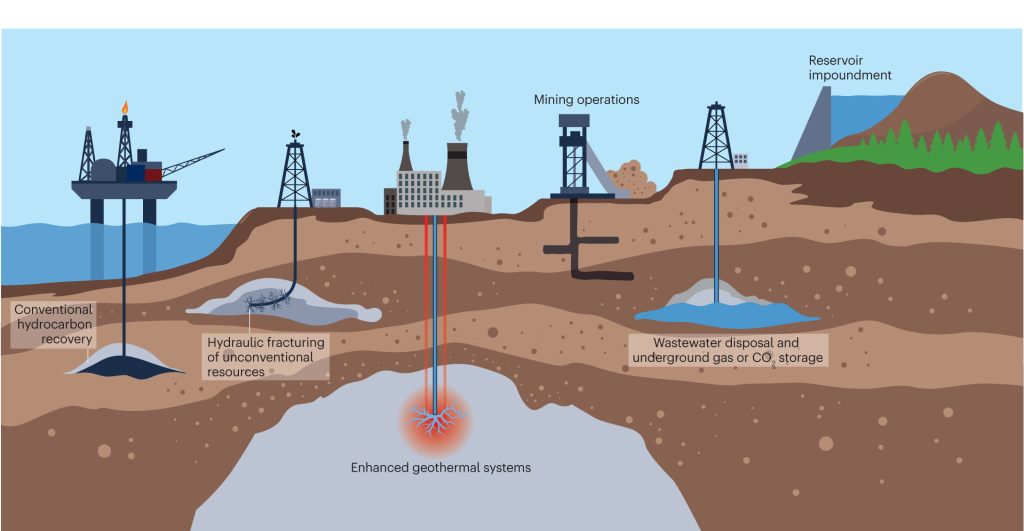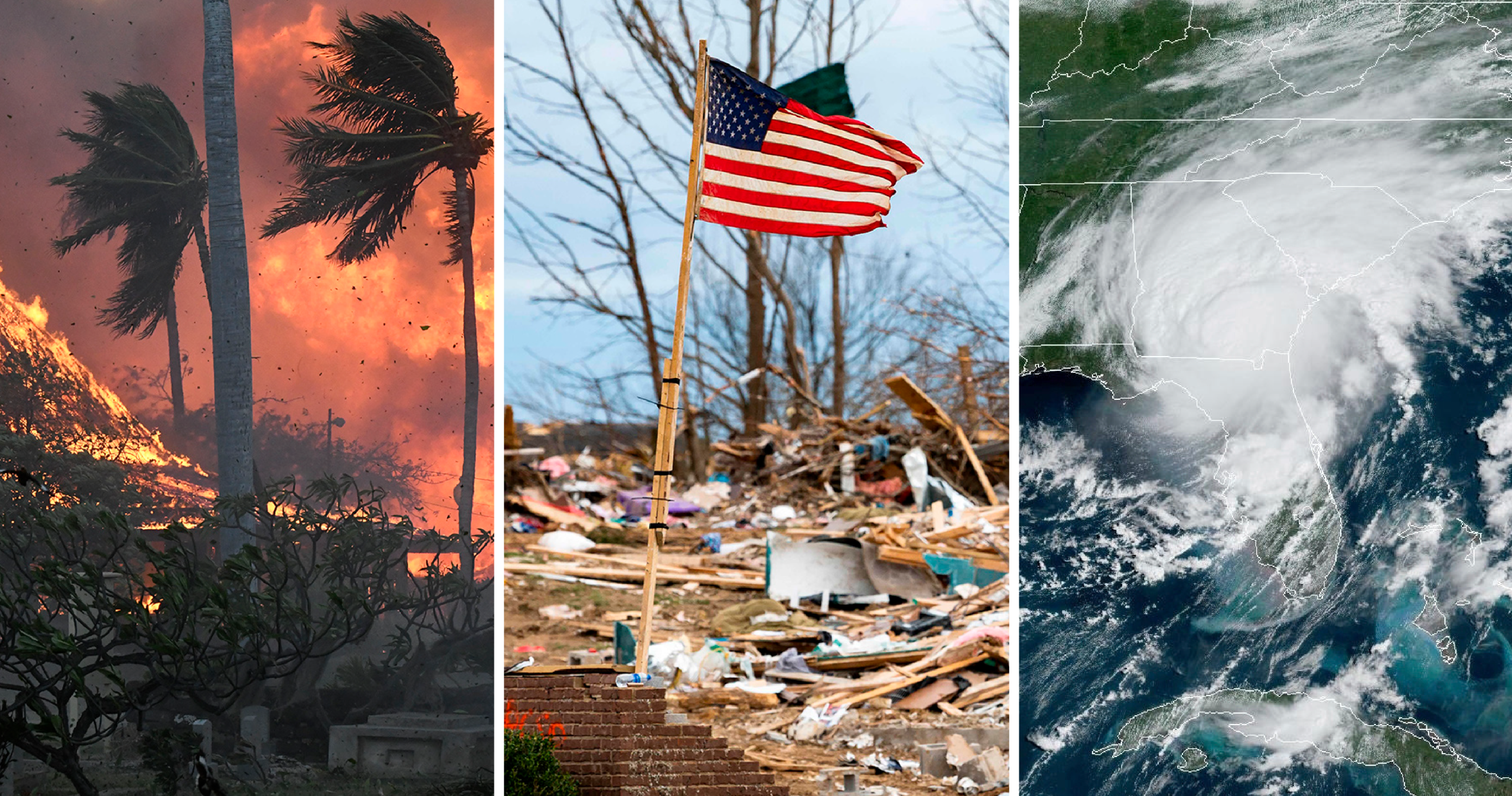When we think of earthquakes, we often associate them with natural geological forces deep beneath the Earth’s surface. However, over the past few decades, scientists have uncovered a startling reality—some earthquakes are actually caused by human activities. In the United States, oil and gas operations have been identified as a key factor behind induced seismicity, meaning earthquakes triggered by industrial processes.
The connection between energy extraction and seismic activity has raised concerns across the country, particularly in states where fracking and wastewater disposal are widespread. But how do these activities lead to earthquakes? Which regions are most affected? And what can be done to reduce the risks?
The Science Behind Induced Seismicity
Oil and gas operations can trigger earthquakes in multiple ways, but the most significant cause is wastewater injection https://www.scientificamerican.com/article/fracking-can-cause-earthquakes/. Here’s how it happens:
- Hydraulic fracturing (fracking) involves injecting high-pressure fluids into underground rock formations to extract oil and gas. While fracking itself causes minor tremors, they are usually too small to be felt.
- Wastewater disposal wells, used to store the large volumes of water produced during oil and gas extraction, are the real problem. Injecting wastewater deep underground increases pressure on fault lines, sometimes causing them to slip, resulting in an earthquake.
Scientists have found that increased pore pressure deep in the Earth’s crust can significantly lower the friction holding fault lines in place. When this happens near an existing fault, even one that has been dormant for centuries, it may suddenly become active, triggering a quake.
Where Are Induced Earthquakes Happening in the U.S.?
Seismic activity linked to oil and gas operations has been documented across multiple states, with some experiencing a dramatic increase in earthquakes over the past two decadeshttps://gisvalley.com/the-most-earthquake-prone-states-in-the-usa-are-you-at-risk/.
Oklahoma: The Epicenter of Induced Seismicity
A state that once had minimal seismic activity now experiences hundreds of earthquakes annually. The 5.8-magnitude Pawnee earthquake in 2016 remains the largest human-induced quake recorded in the U.S.
Texas: The Permian Basin Shake-Up
Texas, home to one of the nation’s largest oil-producing regions, has seen increased earthquake activity, particularly around Midland, Odessa, and Fort Worth.
Kansas: A Growing Concern
Although not traditionally an earthquake-prone state, southern Kansas has experienced a significant rise in seismic events correlated with fracking wastewater disposal.
Colorado: A History of Induced Quakes
As early as the 1960s, scientists linked deep-well injection near Denver to human-induced seismicity. Today, areas such as Greeley and Weld County continue to be affected.
Ohio: Unexpected Seismic Events
In recent years, parts of eastern Ohio have recorded earthquakes near fracking sites, prompting regulators to temporarily shut down some operations.
How Big Can Induced Earthquakes Get?

Most human-induced earthquakes are minor, measuring below magnitude 3.0—small enough to go unnoticed. However, larger quakes have occurred, with some exceeding magnitude 5.0, strong enough to cause damage.
- 2016 Pawnee, Oklahoma (M5.8) – The most powerful induced earthquake in U.S. history, damaging historic buildings and homes.
- 2011 Prague, Oklahoma (M5.7) – Caused damage to infrastructure and was felt across multiple states.
- 2015 Cushing, Oklahoma (M5.0) – Raised concerns due to its impact on critical oil storage facilities.
If wastewater injection continues in high-risk areas, scientists warn that even stronger earthquakes could occur in the future.
What’s Being Done to Reduce the Risk
As the connection between energy production and seismic activity has become clearer, regulatory agencies and industry leaders have taken steps to address the issue. Some key measures include:
🔹 Reducing Injection Volumes – Oklahoma, for instance, has restricted wastewater injection volumes in earthquake-prone areas, leading to a decline in seismic events.
🔹 Shutting Down High-Risk Wells – Authorities in some states have suspended operations at wells linked to increased earthquake activity.
🔹 Enhancing Seismic Monitoring – More seismic sensors have been deployed in affected regions to track earthquake activity and improve prediction models.
🔹 Developing Alternative Wastewater Disposal Methods – Companies are working on ways to reuse or recycle wastewater instead of injecting it underground.
While these efforts have helped reduce the frequency and intensity of induced earthquakes, they are not a complete solution, and concerns remain about the long-term risks of continued energy extraction.
The Industry Debate: Who’s Responsible?
The oil and gas industry plays a vital role in the U.S. economy, supporting jobs and energy security. However, as induced earthquakes become more frequent, debates over industry responsibility and regulation have intensified.
⚖ Homeowners affected by induced earthquakes have filed lawsuits seeking compensation for property damage.
⚖ Some argue for stricter regulations to limit wastewater injection and reduce seismic risks.
⚖ Industry representatives maintain that existing measures are sufficient and emphasize the economic importance of continued oil and gas production.
The challenge lies in balancing energy needs with public safety, ensuring that extraction methods do not come at the cost of increased earthquake risks.
Looking Ahead: What Does the Future Hold?
Scientific research into human-induced seismicity is ongoing, with several key areas of focus:
📌 Identifying the Most Vulnerable Faults – Not all faults respond the same way to wastewater injection. Understanding which ones are most at risk is crucial.
📌 Improving Prediction Models – Unlike natural earthquakes, induced seismicity follows predictable patterns, allowing researchers to refine forecasting methods.
📌 Exploring New Technologies – Engineers are working on safer, more sustainable extraction methods that minimize the need for deep-well injection.
As research progresses, the hope is that more effective solutions will emerge to reduce seismic risks while maintaining the country’s energy production.
Final Thoughts: A Delicate Balance
The connection between oil and gas operations and earthquakes is a stark reminder of how human activities can impact natural systems. While energy production remains crucial for economic growth, the risks of induced seismicity cannot be ignored.
- States like Oklahoma, Texas, and Kansas have seen a sharp increase in earthquakes.
- Wastewater injection is the primary cause of these events.
- Regulatory measures have helped reduce earthquake frequency, but risks remain.
As public awareness grows and scientific understanding improves, policymakers, industry leaders, and communities must work together to ensure a safer, more sustainable approach to energy production.
💡 What Can You Do?
✅ Stay informed about seismic risks in your region.
✅ Support policies that promote responsible energy production.
✅ If you live in an affected area, prepare for potential earthquakes by securing your home and having an emergency plan.
The future of energy extraction must balance economic benefits with environmental responsibility, ensuring that the earth beneath our feet remains stable for generations to come.


